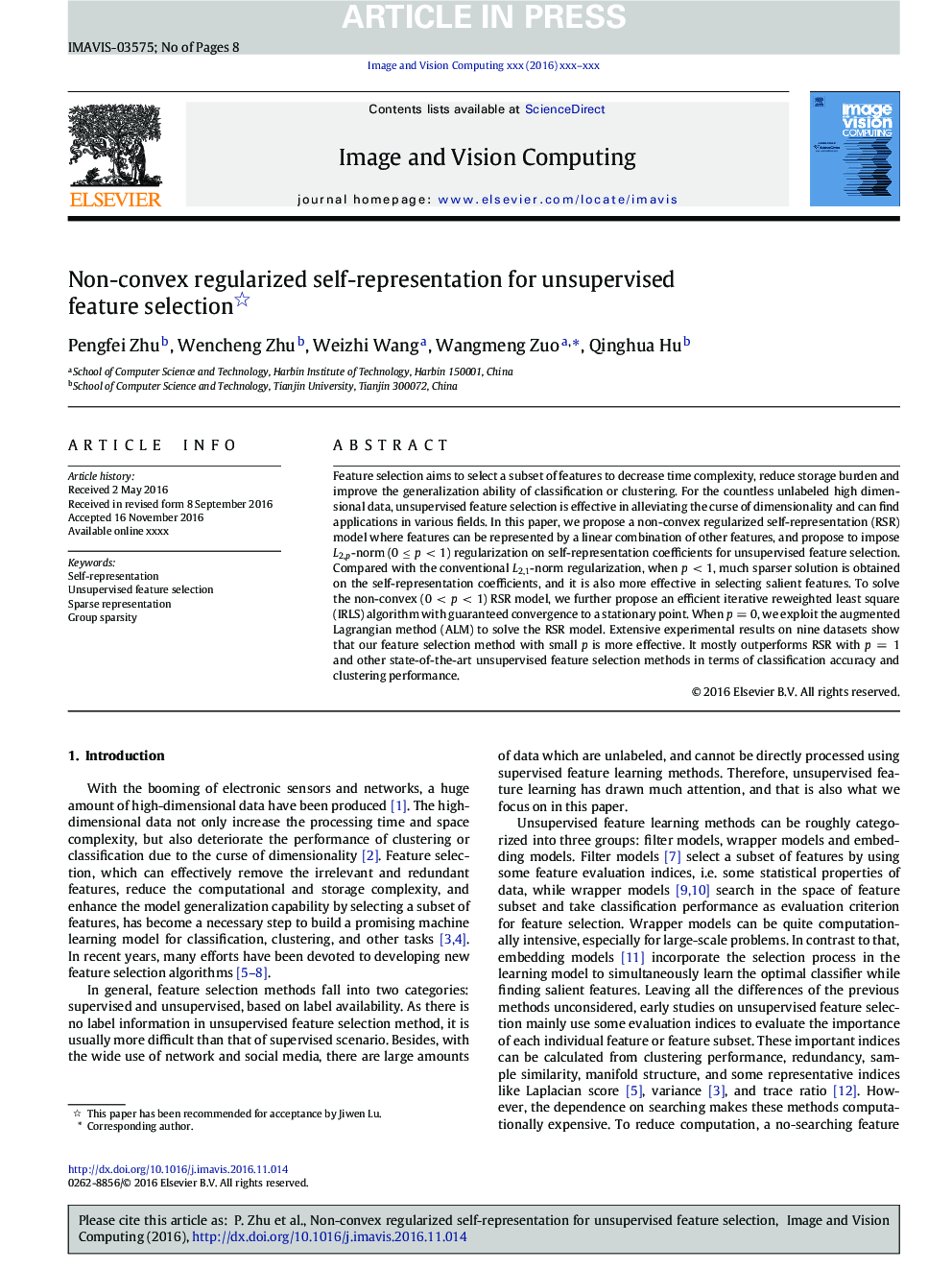| Article ID | Journal | Published Year | Pages | File Type |
|---|---|---|---|---|
| 4968916 | Image and Vision Computing | 2017 | 8 Pages |
Abstract
Feature selection aims to select a subset of features to decrease time complexity, reduce storage burden and improve the generalization ability of classification or clustering. For the countless unlabeled high dimensional data, unsupervised feature selection is effective in alleviating the curse of dimensionality and can find applications in various fields. In this paper, we propose a non-convex regularized self-representation (RSR) model where features can be represented by a linear combination of other features, and propose to impose L2,p-norm (0 ⤠p < 1) regularization on self-representation coefficients for unsupervised feature selection. Compared with the conventional L2,1-norm regularization, when p < 1, much sparser solution is obtained on the self-representation coefficients, and it is also more effective in selecting salient features. To solve the non-convex (0 < p < 1) RSR model, we further propose an efficient iterative reweighted least square (IRLS) algorithm with guaranteed convergence to a stationary point. When p = 0, we exploit the augmented Lagrangian method (ALM) to solve the RSR model. Extensive experimental results on nine datasets show that our feature selection method with small p is more effective. It mostly outperforms RSR with p = 1 and other state-of-the-art unsupervised feature selection methods in terms of classification accuracy and clustering performance.
Related Topics
Physical Sciences and Engineering
Computer Science
Computer Vision and Pattern Recognition
Authors
Pengfei Zhu, Wencheng Zhu, Weizhi Wang, Wangmeng Zuo, Qinghua Hu,
